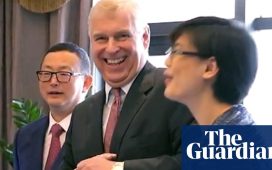Receive free US foreign policy updates
We’ll send you a myFT Daily Digest email rounding up the latest US foreign policy news every morning.
Tech decoupling between the US and China is about many things, but chief among them is the notion that western technology should not feed Chinese military modernisation and expansion. From an American standpoint, this seems pretty obvious. Why should US money, products and expertise aid the military strength of its chief strategic adversary?
That’s the rationale for last week’s new executive order from the White House limiting US investment into China in areas of technology that pose the most acute national security risks, like semiconductors, quantum computing and artificial intelligence. The idea is to expand on existing export bans to China, as well as limits on Chinese acquisition of US technology, by also restricting how US investors put capital into the most strategic sectors in China.
The new rule is actually much more about expertise than money. “It’s not capital that’s in short supply,” deputy national security adviser Mike Pyle told me. “It’s capital plus the access to experts and additional assistance.” Translation: this isn’t about curbing passive investment into China via, say, public securities or exchange traded funds, so much as it is about preventing top US venture capitalists and private equity funds from transferring important western-made intangible assets — patents, data, software and other kinds of IP — along with their investments.
Strategic investments from the US to China have already been curtailed significantly in the last couple of years. US dollar funding for China-focused venture capital and private equity funds fell to $14bn in 2022 from $95bn in 2021. The new executive order will undoubtedly push those flows lower.
The proposal is designed to continue the administration’s “small yard, high fence” approach to limiting tech decoupling to the most crucial areas of national security. The question is how to draw a line about what general purpose technologies like artificial intelligence might actually be used for: an algorithmic takedown of the dollar-based financial system, for example, or a machine-generated song that mimics the voices of the latest hot K-pop band. “We think this is a hard problem,” admits Pyle.
The administration has already taken consultations with hundreds of stakeholders about how small the yard and high the fence will be, including industry, foreign allies and other partners. There will be more to come as the White House takes formal comments on the proposal over the next few months. But it’s telling that the Business Roundtable welcomed the administration’s approach, which tells me that the executive order is already seen as being less tough on the tech industry — and industry in general — than some on either side of the political aisle had hoped.
Where to draw lines about dual-use technologies isn’t the only hard problem. The White House has tried to keep defence-related technology transfer between the two countries separate from a broader discussion about US industrial policy. This discussion covers how to bolster the availability of critical mineral supplies and key pharmaceutical inputs monopolised by China. It looks at how to increase the location and supply of semiconductor manufacturing globally. But China’s communist rulers do not make the same distinctions. The free market is always in service to the state, not the other way around.
This poses a fundamental challenge for the White House. Security hawks could do the best possible job of ringfencing dual-use technology behind a very high wall, and the US would still face critical national security vulnerabilities in areas like pharmaceuticals and biotech, green batteries, shipbuilding and many other areas. Securing those will require a much broader approach to tracking global supply chains, and understanding where chokepoints — be they controlled by states or corporations — lie.
Thinking in broad economic terms about how to achieve national security isn’t something that the US has done for quite a while (trade as a tool of modern industrial policy died after Ronald Reagan’s time). The Biden administration has made it clear that we’ve moved beyond a market-knows-best philosophy and need some government intervention to ensure the strength of our industrial base, labour force and defence preparedness. But there’s not yet a joined-up plan about how to get there.
It’s a topic that is likely to come to the fore in autumn as Congress returns to work and decides whether to broaden the restrictions in the executive order. The current Senate proposal for outbound investment has some provisions that are weaker than the White House’s measure, but it would also require passive portfolio investors, joint venture and research projects to report activities in China. Meanwhile, there are politicians on both sides of the aisle, from Republicans like Senator Marco Rubio to Democrats like Representative Rosa DeLauro, who want to see trade and capital flows in a broader range of sectors under more scrutiny.
There are plenty of people who will say moves like the new executive order “escalate” conflict with Beijing. I’d argue they merely draw attention to uncomfortable truths that have in fact always been there in plain sight. For years, the west thought security and market concerns were separate. But for China, national security and economic security are the same thing. The decoupling story is far from over.











